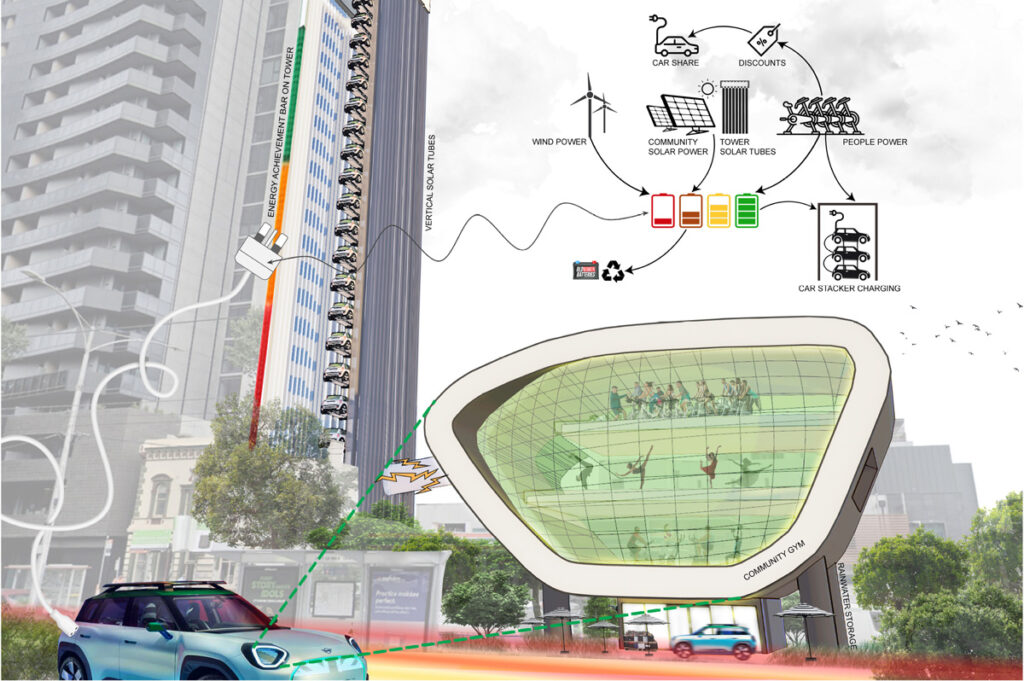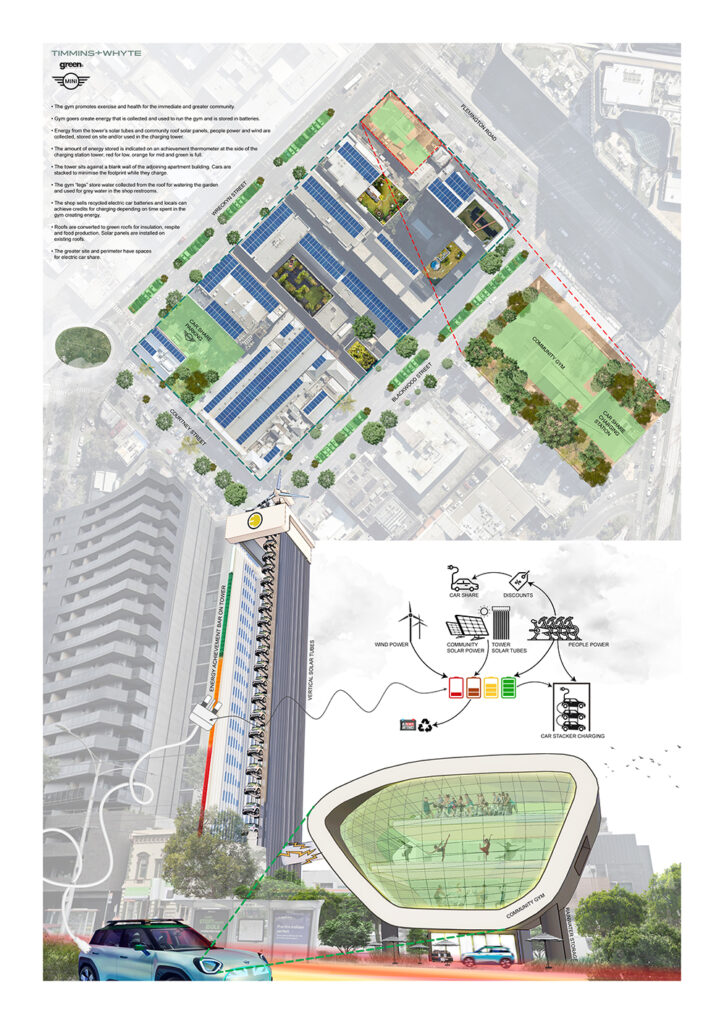INVERT 4.0 TIMMINS + WHYTE
THE BRIEF
As renewables become the dominant energy source and electric vehicles the norm, how will our cities adapt?
green magazine and MINI invited architects and RMIT master of architecture students to hypothetically redesign an inner urban precinct to demonstrate how architecture, renewable energy and electric cars could work together to produce smarter outcomes for residents and visitors. We asked: how can the well-being of the community be enhanced?
TIMMINS + WHYTE
The gym promotes exercise and health for the immediate and greater community.
Gym goers create energy that is collected and used to run the gym and is stored in batteries.
Energy from the towers solar tubes and community roof solar panels, people power and wind are collected, stored on site and/or used in the charging tower.
The amount of energy stored is indicated on an achievement thermometer at the side of the charging station tower; red for low, orange for mid and green is full.
The tower sits against a blank wall of the adjoining apartment building. Cars are stacked to minimise the footprint while they charge.
The gym “legs” store water collected from the roof for watering the garden and used for grey water in the shop restrooms.
The shop sells recycled electric car batteries and locals can achieve credits for charging depending on time spent in the gym creating energy.
Roofs are converted to green roofs for insulation, respite and food production. Solar panels are installed on existing roofs.
The greater site and perimeter have spaces for electric car share.




